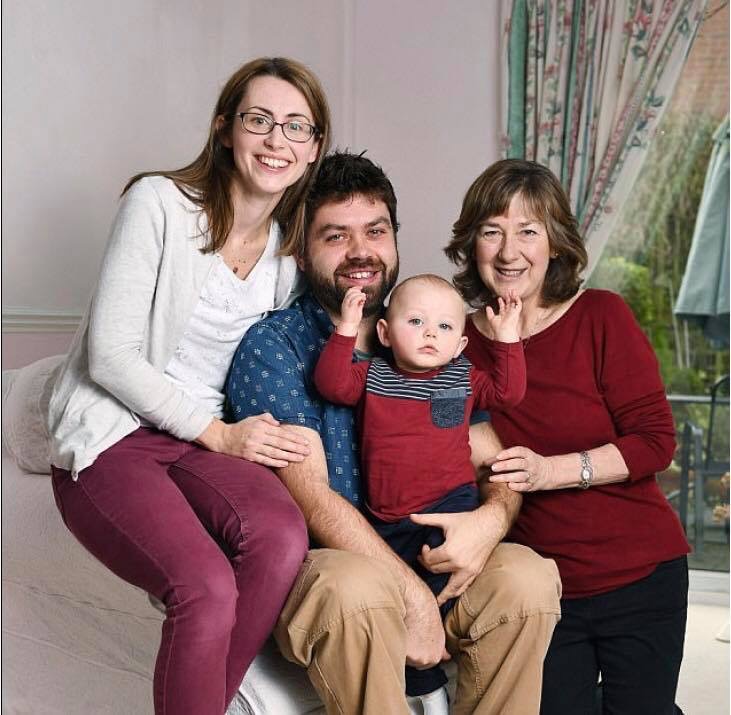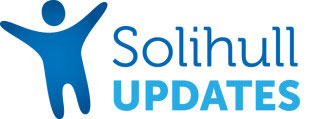Solihull mother and son both receive heart transplants

Anne Bill, 62, from Dorridge lived with an undiagnosed, rare and dangerous heart condition for over 30 years, during which time she had two children and pursued a career as a primary school teacher.
Anne received a diagnosis of dilated cardiomyopathy, a condition where the left chamber of the heart becomes stretched and muscles weaken reducing the heart’s ability to pump blood efficiently, when she was in her thirties – however, Anne didn’t fall ill until almost thirty years after.
“I had been feeling short of breath for a while, but while we were away I started to get chest pains so we drove back across France to the Queen Elizabeth Hospital Birmingham’s Accident and Emergency Department where I was admitted straight away.”
Unfortunately Anne’s heart was so damaged by the condition that the only option for her was to have a heart transplant, and so, after four weeks in hospital a heart was found.
However, when a heart is removed from a deceased patient there is a very short window where the heart remains in a good enough condition to be transplanted, and even then, each heart is rigorously tested to ensure its suitability for transplantation.
In Anne’s case, two hearts were found to be unsafe for transplantation and she was not able to have her transplant until a third heart was found.
Dilated cardiomyopathy is strongly linked to genetics and there is a 50% chance that if you have the condition your children will also have it.
For Anne, both of her children, Paul and Nick, who were teenagers at the time, were found to have the condition.
Paul Bill, Anne’s eldest son also needed a heart transplant, and at age 19, he became ill whilst studying Computer Science at Oxford Brookes University and after being admitted to his local hospital.
He was taken to QEHB’s specialist cardiac centre to await the transplant.
Paul, like his mother was lucky to have a suitable heart found in a matter of days.
Paul said: “Not everybody is able to receive a heart as quickly as I did, my mum and I are so grateful to the families whose loved ones were able to help us continue to live life to the full.
“Just four days after my operation I was back on my bicycle, and I was able to play tennis again, something that is really important to me.”
Paul’s younger brother Nick was also struggling with his heart condition, however due to the damage to his heart being less severe than his brother’s and mother’s, doctors fitted him with an LVAD machine – a device which acts as an artificial heart pump to increase blood flow around the body.
Anne explained: “The LVAD machine did limit Nick’s life in many ways, he couldn’t go swimming, and he would worry about it running out of battery on long journeys, but on the whole he was just a normal 21 year old.
“In those days, an LVAD machine wasn’t believed to be a safe long-term solution, and doctors believed that Nick’s heart had been recovered, so after nine months the hospital removed it.
“Sadly, Nick’s body couldn’t cope with the shock of the operation and he developed septicaemia and eventually passed away from a brain haemorrhage. It all happened so quickly.”
Now, the family are passionately fundraising to bring Heart in a Box to QEHB, this revolutionary technology will allow twice as many people to receive safe and timely heart transplants, supporting families such as the Bills to live long and fulfilling lives.
In 2016, Paul’s wife, Kim, who he met at University, underwent Pre-implantation Genetic Diagnosis with a specialist teams at Birmingham Women’s Hospital, this meant they able to isolate the gene that causes dilated cardiomyopathy and only use healthy embryos and freeze the other healthy ones for future use.
Paul added: “Kim and I didn’t want our children to go through what my family have gone through, and whilst we are extremely grateful that my mum and I are still here, but for others, like my brother, cardiomyopathy can be deadly.
“In October 2016 our son, Joshua was born; he brings us so much joy.”
If you’d like more information about how QEHB Charity supports patients, please go to www.qehb.org

